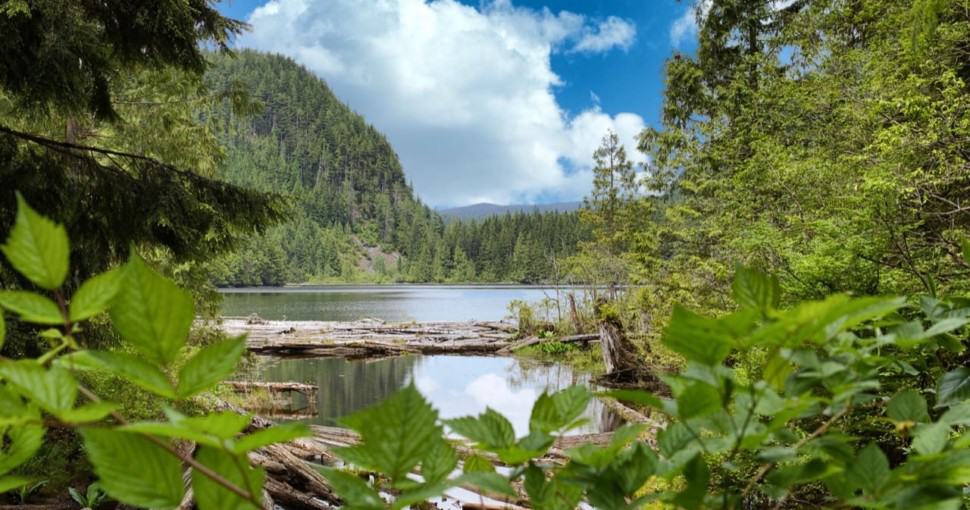Like many other northwestern states, Washington is home to a large and diverse collection of trees. As a part of the region known as the Pacific Northwest, Washington, along with Oregon and California, has a partly oceanic climate due to its border with the Pacific Ocean. As in other states, this partly oceanic climate favors the growth of forests, which are prevalent across about half of the state’s land area.
Contents
- 1. Mountain Hemlock (tsuga mertensiana)
- 2. Douglas Fir (pseudotsuga menziesii)
- 3. Western Red Cedar (thuja plicata)
- 4. Sitka Spruce (picea sitchensis)
- 5. Ponderosa Pine (pinus ponderosa)
- 6. Red Alder (alnus rubra)
- 7. Pacific Yew (taxus brevifolia)
- 8. Alpine larch (larix lyallii)
- 9. Western Juniper (juniperus occidentalis)
- 10. Paper Birch (betula papyrifera)
- 11. Black Cottonwood (populus trichocarpa)
- 12. Pacific Madrone (arbutus menziesii)
- 13. Pacific dogwood (cornus nuttallii)
- 14. Vine Maple (acer circinatum)
- 15. Cascara (frangula purshiana)
Washington’s forested area mostly lies west of the mountainous areas known as the Cascade Range, which bisects the state of Washington into Eastern and Western Washington. The west of the Cascades experiences a Mediterranean climate with relatively mild temperatures and wet summers. Much of this region supports dense temperate rainforest of conifer species.
The climate is relatively dry to the East of the Cascades and includes arid desert and semiarid steppe regions. While there is essentially no forested area in this rain-shadowed region east of the Cascades, this landscape is very important for upholding the state’s agricultural productiveness.
This article will outline 15 of the most common types of trees in Washington State, explaining some important characteristics and defining features of each one along the way.
1. Mountain Hemlock (tsuga mertensiana)
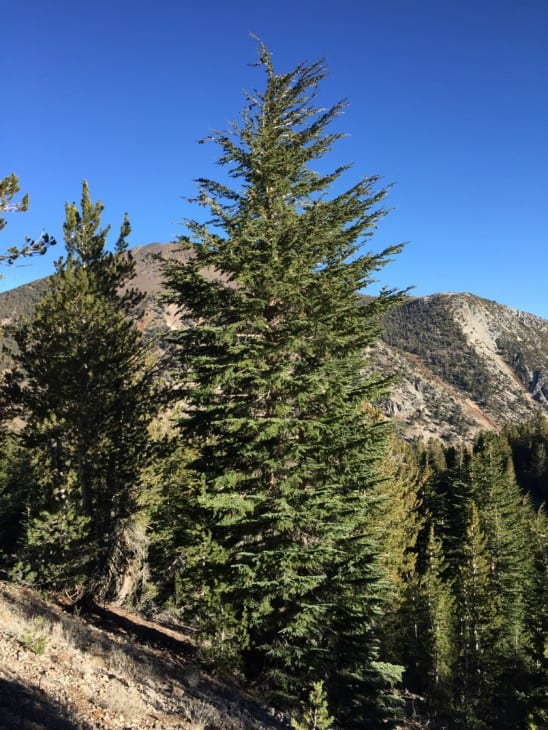
Indigenous to the west coast of North America, the Mountain Hemlock is a species of Hemlock and is an evergreen coniferous tree. The Mountain Hemlock grows up to 20 to 40 meters in height and up to 2 meters in trunk diameter.
The tree’s bark is thin, furrowed, and gray, while the crown is slender and conical in juvenile trees and more cylindrical in older ones. The tree has 7 to 25 mm long needle-like leaves. Most Western Hemlock trees are distributed within 100 km off the Pacific coast in Washington, Oregon, and Alaska. However, some inland populations exist in western Montana and Northern Idaho.
2. Douglas Fir (pseudotsuga menziesii)
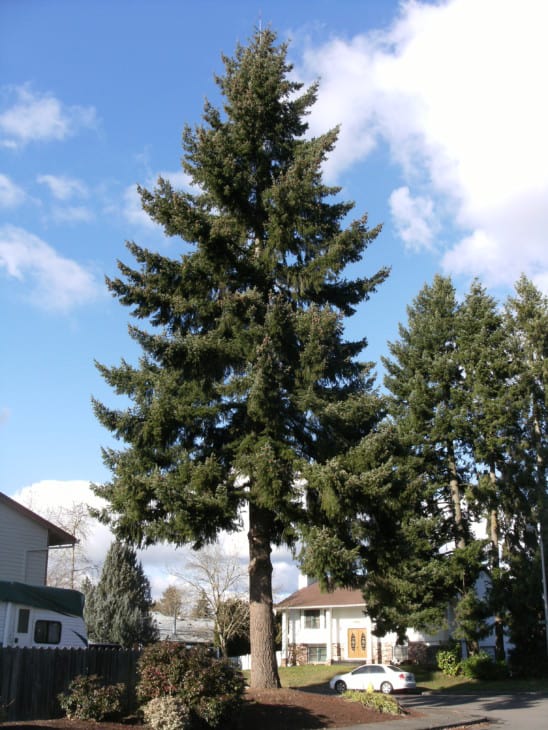
A widely-known variety of the pine family, Douglas Firs, is an evergreen conifer species indigenous to North America. They are medium-sized trees reaching 20 – 35 meters in height and 8 feet in trunk diameter. The Douglas Fir normally reaches its maximum height in populations that are closer to the coastal areas.
The Douglas Fir has flat and soft needle-like leaves that can be used to identify the species due to their tendency to entirely encircle the tree’s branches. Moreover, this tree has a very thick bark, making it one of the Pacific Northwest’s most fire-retardant trees.
3. Western Red Cedar (thuja plicata)
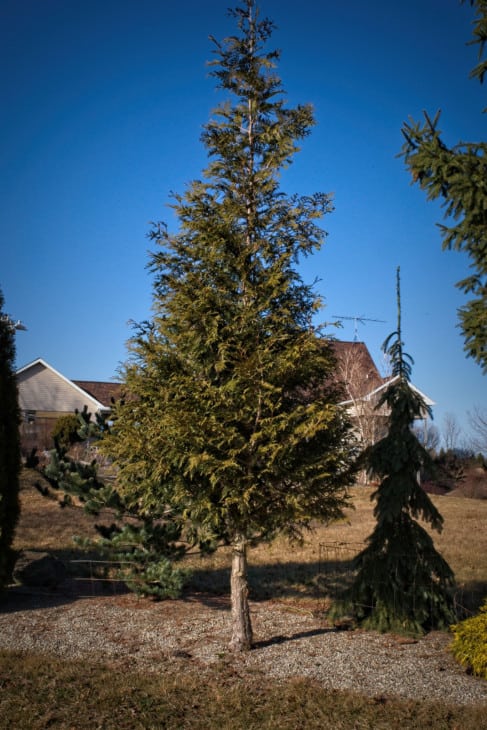
The Western Red Cedar is an evergreen coniferous tree that is part of the cypress family and is the most prevalent species of tree in its indigenous region, the Pacific Northwest. This prevalence is evidenced by the fact that the Western Red Cedar has populations distributed from sea level up to a maximum elevation of 2,290 meters.
The Western Red Cedar can live up to a remarkable 100 years and, during its long lifetime, can grow up to 70 meters in height and 7 meters in trunk diameter.
4. Sitka Spruce (picea sitchensis)
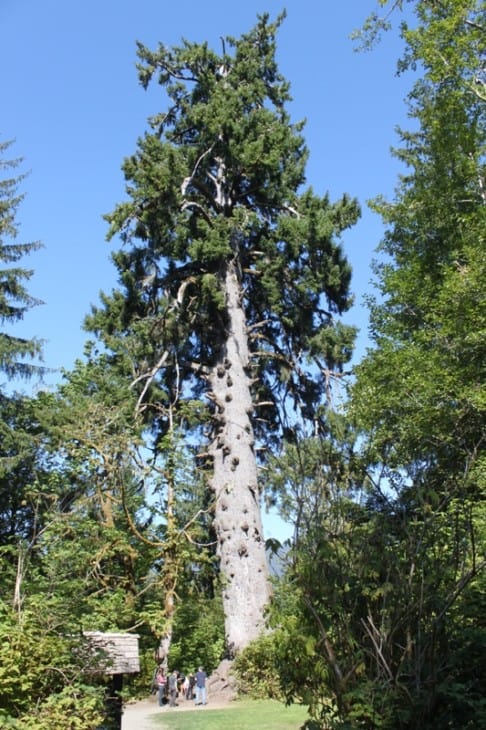
Taking its name from Sitka in Southeast Alaska, where this tree is prevalent, the Sitka Spruce is a very large species of evergreen coniferous tree. This tree can grow up to an enormous height of 100 meters and a trunk diameter of 5 meters.
The Sitka Spruce’s bark is thin and scaly and is comprised of circular plates. The leaves are tough, sharp, and needle-like and can grow up to 3 cm in length. Although prevalent along the coastal states of Washington, Oregon, and California, the Sitka Spruce’s distribution does not extend past 50 miles inland of the Pacific.
5. Ponderosa Pine (pinus ponderosa)
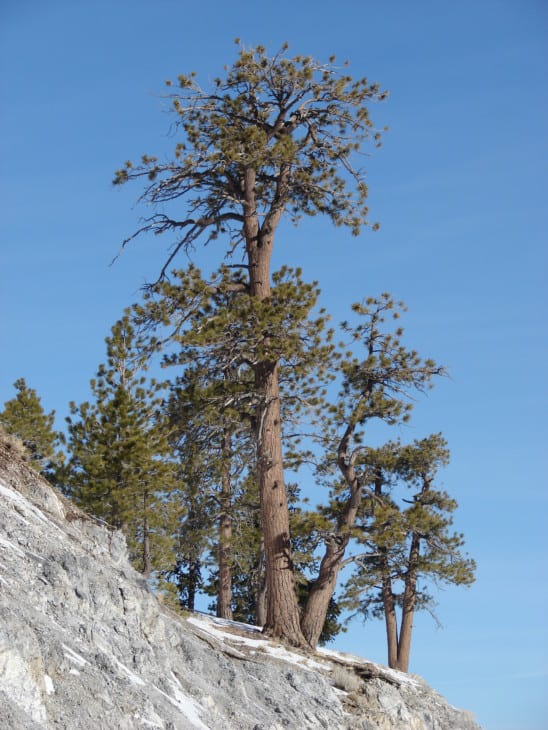
Native to the mountainous regions of the Pacific Northwest, the Ponderosa Pine is a very large and widely distributed species of coniferous pine. This highly adaptive species of pine is distinguished by its yellow to orange-red bark color.
The Ponderosa Pine tends to grow to a height of 50 to 70 meters and has long, flexible, needle-like, and bright-green leaves. In different environments, however, the leaves of the Ponderosa Pine tend to take on distinct characteristics.
The Ponderosa Pine is prevalent in large numbers in the Okanagan Valley and Puget Sound areas of Washington, on the banks of the Niobrara River in Nebraska, and the Willamette Valley of Oregon.
6. Red Alder (alnus rubra)
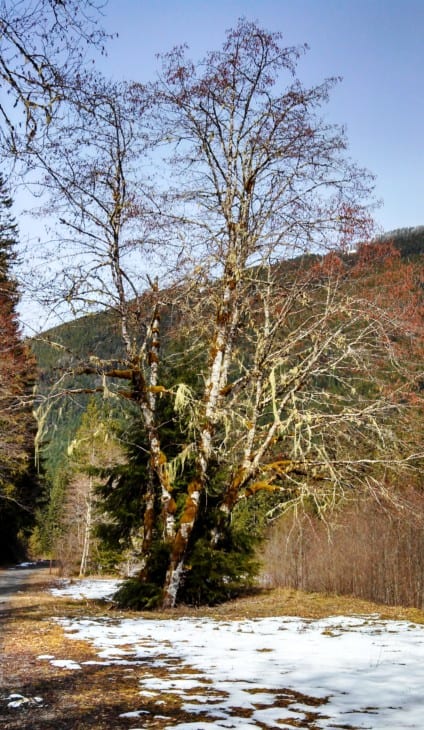
The largest species of Alder tree in all of North America, the Red Alder gets its name from the rusty or bright red color of its bark when it is scraped or bruised. This is a deciduous broadleaf tree that reaches heights of 20 to 30 meters.
The Red Alder has long, ovate leaves that have bluntly serrated edges and a pointy end. The tree grows best on moist and cool slopes, and hence the Red Alder is prevalent along the watercourses and wetlands of the Pacific Northwest.
7. Pacific Yew (taxus brevifolia)
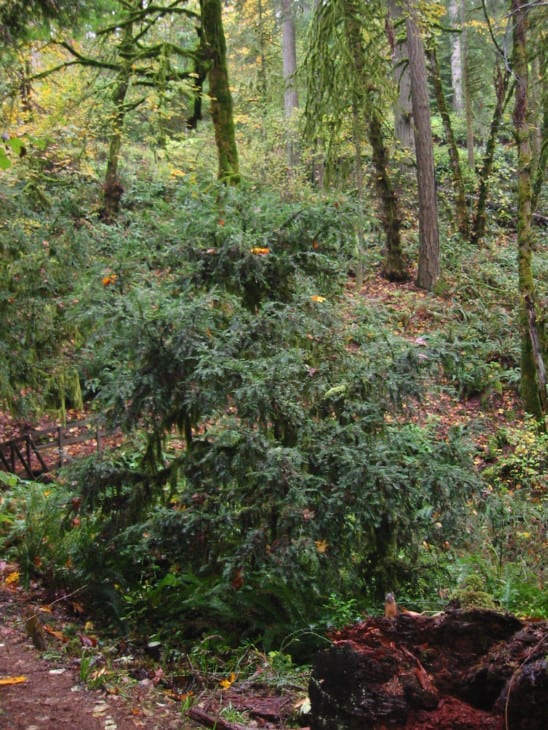
Also known as the Western Yew, this tree is a species of the Yew family and is indigenous to the Pacific Northwest. Populations of Pacific Yew can be found in Alaska, California, and of course, Washington, although smaller populations exist in Idaho and British Columbia.
This small to medium-sized evergreen conifer grows up to 15 meters in height and 0.5 meters in trunk diameter. Moreover, the tree grows very slowly and tends to become hollowed out over time. The Pacific Yew can be identified by its thin and scaly brown bark and its flat, dark-green, lanceolate leaves.
8. Alpine larch (larix lyallii)
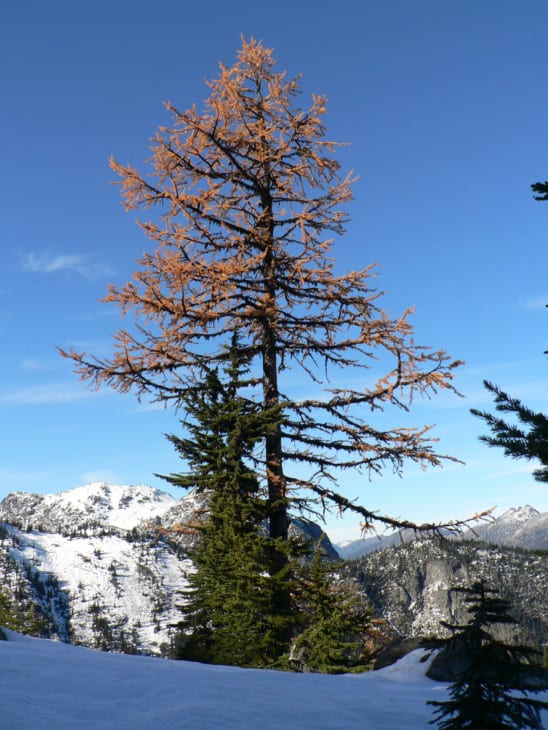
Indigenous to Northwestern North America, the subalpine larch, or Alpine Larch, is a species of deciduous, coniferous tree that is prevalent in the high altitude regions of the Rocky Mountains in Idaho, Montana, and West of the Cascades in Washington.
Thriving at high altitudes of 1800 to 2400 meters, the Alpine Larch is a very hardy tree that can survive in thin soils and at low temperatures. Lastly, this tree grows to heights of 10 to 25 meters and can be identified by its conical crown and straight trunk.
9. Western Juniper (juniperus occidentalis)
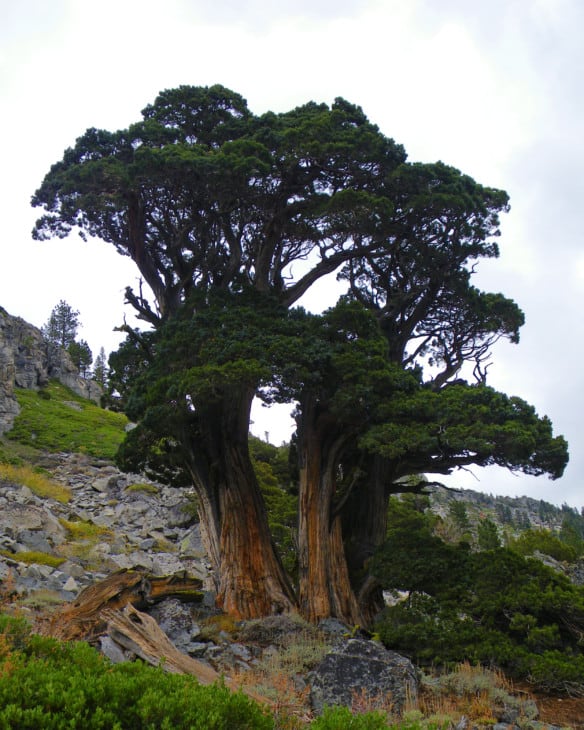
Growing prevalently in the mountainous altitudes of the Pacific Northwest, the Western Juniper is a shrub that can be found at elevations of 800 to 3,300 meters. The Western Juniper thrives in dry, rocky regions where they don’t have to compete for resources with larger trees.
The scaly, needle-like leaves of the Western Juniper grow in whorls of three and act as important food sources for many species of birds. Large populations of Western Juniper can be found in Idaho, Oregon, California, and Washington.
10. Paper Birch (betula papyrifera)
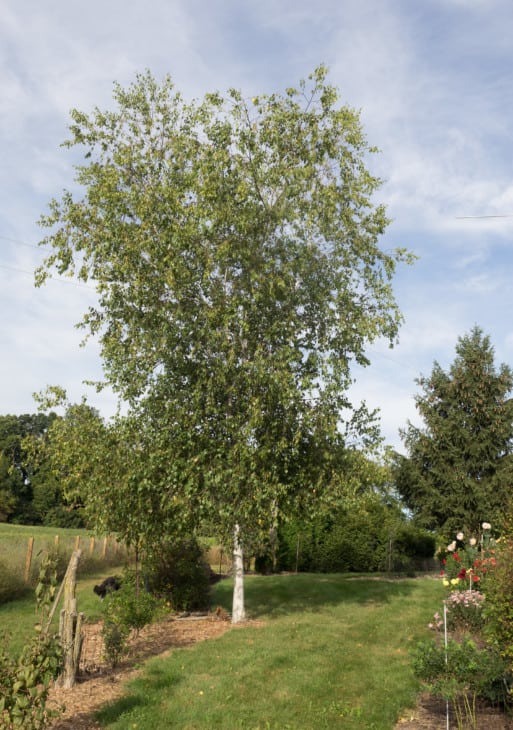
Also known as canoe birch and American White Birch, the Paper Birch is a birch species that is indigenous to North America. Named after its thin white bark, this short-lived deciduous tree reaches heights of 20 to 40 meters and a trunk diameter of 75 cm.
While Paper Birch trees can grow for 100 years in cold climates, they do not handle heat and humidity well, making their average lifespan closer to 30 years. Lastly, this tree is widely distributed, with populations existing in Alaska, Washington, North Carolina, New Mexico, Colorado, Pennsylvania, and the Hudson Valley of New York.
11. Black Cottonwood (populus trichocarpa)
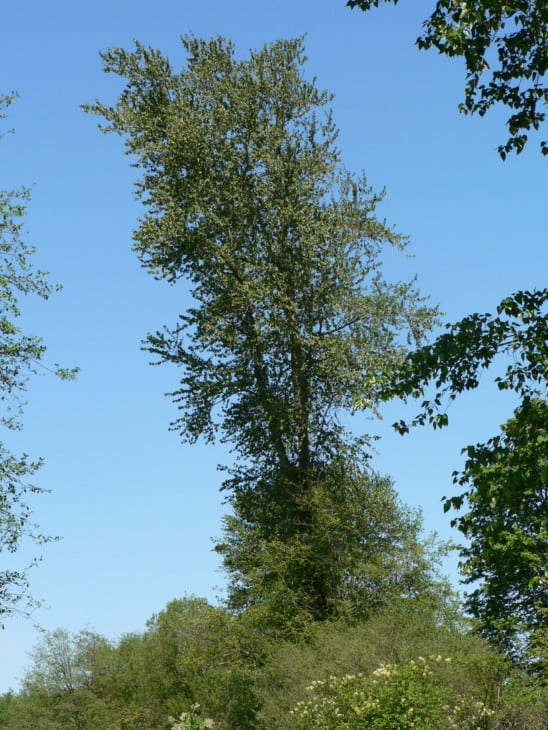
The Black Cottonwood is a deciduous broadleaf tree species native to the western regions of North America. Growing to heights of between 30 and 50 meters, with trunk diameters well over 6 feet, these are particularly large trees. With hard and gray bark and roughly conical crown, the lowest branches of the Black Cottonwood tend to droop downwards
The Black Cottonwood tree is prevalent in the forested areas of Oregon and Washington, Southeast Alaska, and the mountainous landscape of California. Moreover, there are smaller populations in North Dakota, Idaho, Montana, Wyoming, Utah, and Nevada.
12. Pacific Madrone (arbutus menziesii)
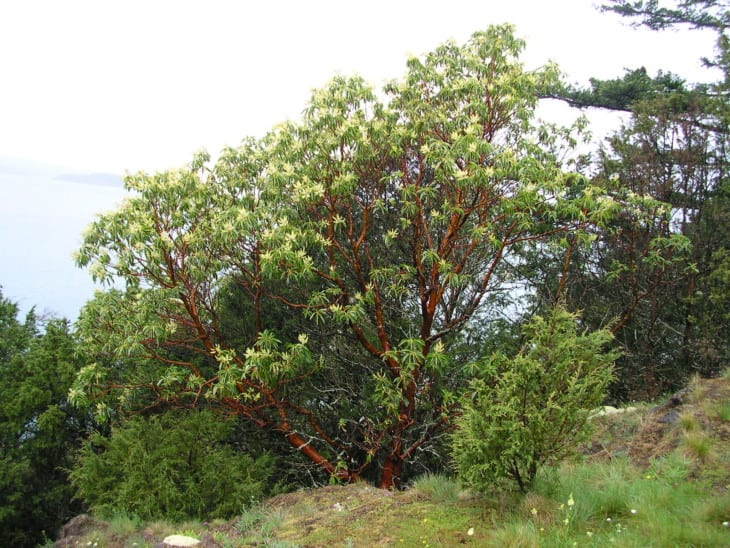
Indigenous to the western coastal areas of North America, the Pacific Madrone is a broadleaf evergreen tree distributed across California to British Columbia. This tree is prevalent in coastal cliffs, where it tends to contort its growth habitat.
Mature Pacific Madrones have an orange-red and flaky bark and grow to heights of 10 to 30 meters and diameters of 5 to 8 feet. Waxy evergreen foliage is typical of the Pacific Madrone, as are their long, broad leaves, which are arranged spirally.
13. Pacific dogwood (cornus nuttallii)
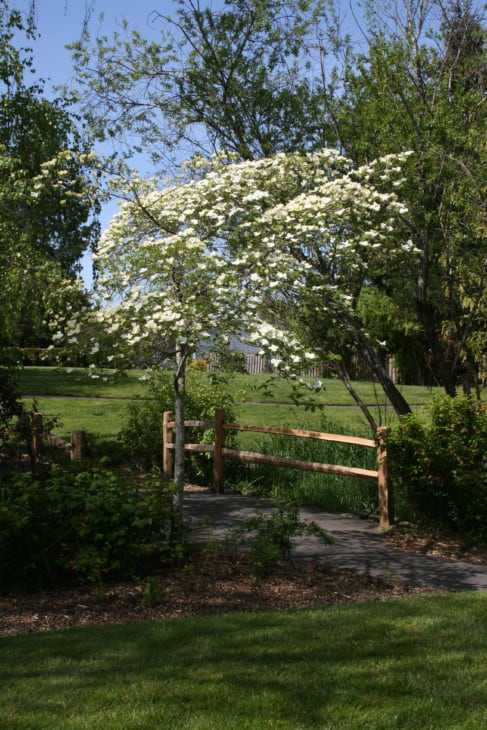
The Pacific Dogwood is a medium-sized deciduous species native to North America that grows to heights of 6 to 23 meters. Importantly, the spread of this tree’s canopy and the height of its trunk tend to vary with the level of sunlight.
The Pacific Dogwood’s branches have very fine hairs, while the bark is relatively smooth. The simple oval leaves of the tree also have fine hairs and conceal rather inconspicuous flowers.
Large populations of Pacific Dogwood exist in Oregon, Washington, and California. Meanwhile, smaller inland populations exist in central Idaho.
14. Vine Maple (acer circinatum)
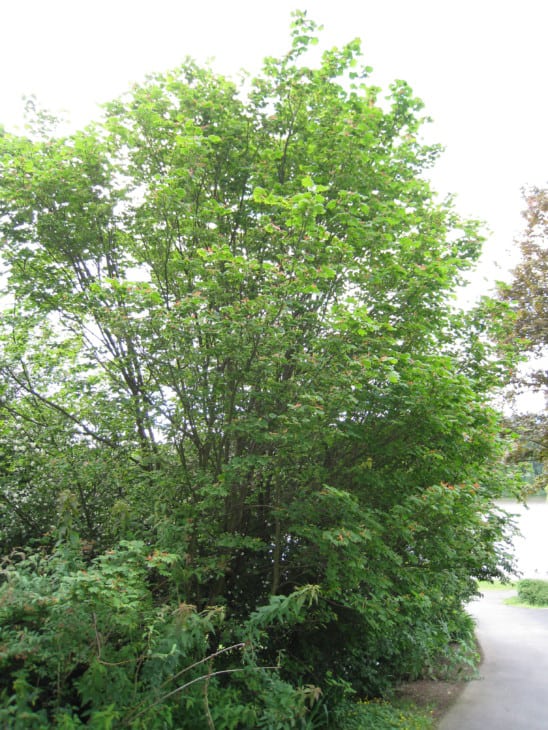
Distributed from southwest British Columbia to the north of California, the Vine Maple is a species of Maple that commonly grows as a large 5 to 8-meter tall shrub. Occasionally, however, the Vine Maple will form a small to medium-sized tree up to 18 meters in height.
The Vine Maple commonly grows in a forest understory and thrives in elevations from sea level up to 1500 meters. Lastly, this tree is highly flexible and sometimes bends its top down to the ground from where it starts a new root system.
15. Cascara (frangula purshiana)
Known by multiple names, including bearberry and Cascara Sagrada, the Cascara tree belongs to the Rhamnaceae family of plants and is indigenous to the Pacific Northwest with populations distributed from British Columbia to California and Montana.
This large shrub at 4.5 meters in height has a silver brown bark and simple, deciduous leaves. Lastly, the Cascara thrives along streamsides in mixed deciduous-coniferous forests.

